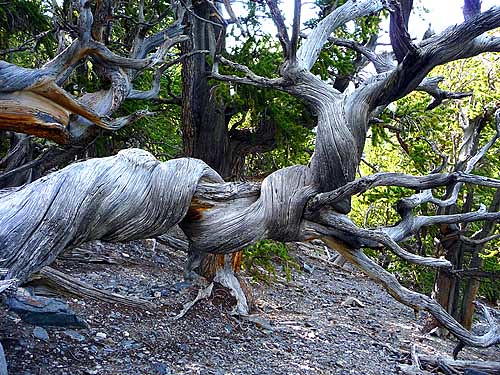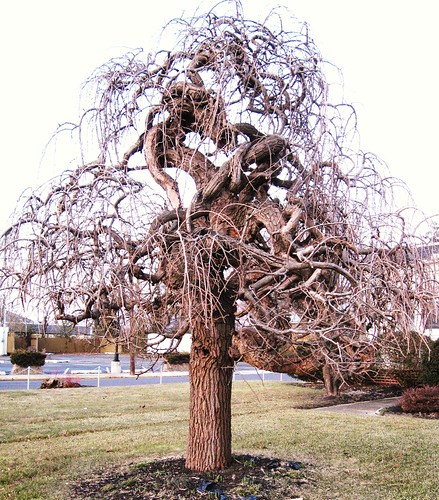Welcome! I'm Sarah Gnarleton, and this is the inaugural post of the Gnarled Tree Fan Club Blog.
While we are in the cruel, icy talons of
that longest of months, newcomers to the Gnarled Tree Fan Club might want to begin gnarl-hunting on their own. After all, when the leaves come off, the gnarls are uncovered; winter is the best time to start looking for gnarled trees. The catch is that in the winter, although many trees seem to look gnarled, not all of them really are. How can we tell if a tree is a really
gnarled gnarled tree, and not just a winter-ravaged trunk with a few twisted branches?

I believe that for the beginner, it doesn't really matter. Winter is the time to cut one's teeth on gnarl-hunting, and even if a tree only looks gnarled because it has lost all of its leaves, it's still a good start. Half-gnarled and semi-gnarled trees are still worth looking at:
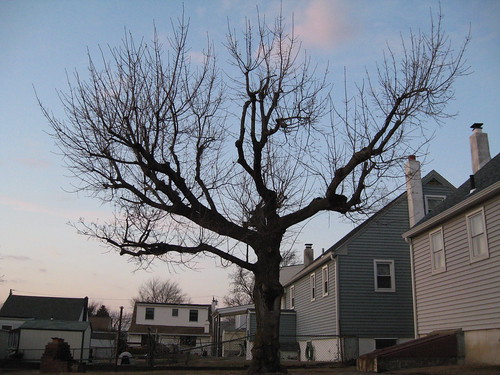
That being said, today's post will help you steer clear of some of the more insidious foes of novice gnarl-hunters. We will focus on the two main requirements of a good gnarled tree: a) it should be gnarled, and b) it should be a tree.
Figure 1: The Indecipherable Tangle.
Gnarled? Unknown. Tree? Unknown.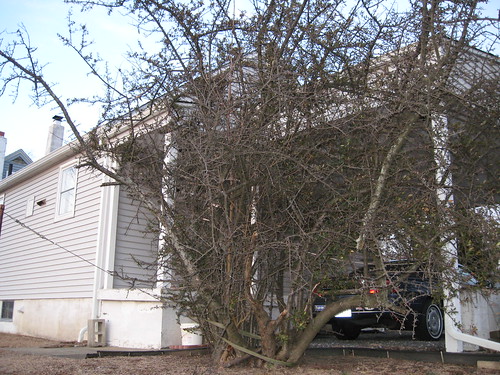
This mess looks like it could be gnarled, and the little bit of trunk showing hints that in another dimension, this might be considered a tree. However, when spring rolls around, this is going to be nothing but a big leafy lump. This is not worth our time; we should focus on
clear examples of gnarling.
Figure 1b: The Indecipherable Pile.
Gnarled? Unknown. Tree? Debatable.
See that tree? No, not those two straight ones. They're not even gnarled. The one behind them that seems to be oriented in all sorts of directions except the traditional one. Could this be a gnarled tree? Not likely. While it is no longer strictly upright, it is also no longer strictly a tree. Besides, the pile is far too orderly to be deemed gnarly.
Figure 2: The Gnarl Decoy.
Gnarled? Yes. Tree? No.
(This photo was taken by
hoveringdog and posted on his Flickr account. Although he is a fantastic photographer, he is not affiliated with the Gnarled Tree Fan Club... yet.)
Are these vines gnarled? They sure are! But we're only halfway there, because this is
not a tree. Treehood is vital.
Figure 3: The Tree Decoy.
Gnarled? No. Tree? Yes.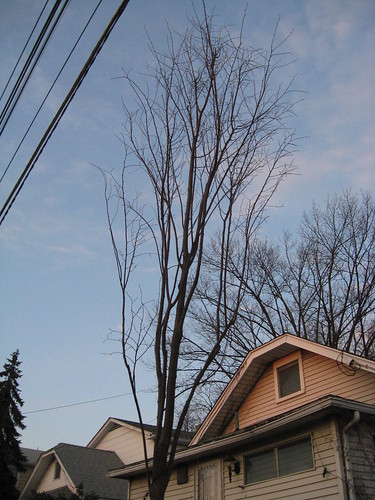
Look! Look! We found a tree! But... it isn't gnarled. Nice try, tree. You do not make the cut.
So what happens when we find a tree that is truly a tree, and it happens to be gnarled as well? We get this:
Figure 4: Gnarl 1, Our Founding Tree.
Gnarled: Oh god yes. Tree: And how.
This is Gnarl 1, the tree that inspired the founding of the Gnarled Tree Fan Club. Let's take a more detailed look at some of the gnarling going on here:

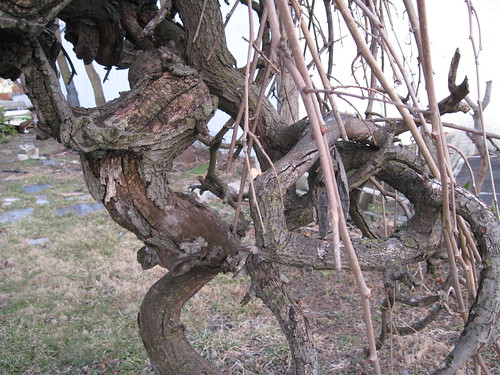
You probably couldn't tell the first time around, but those last two photographs were
of the same branch. They were just taken from different angles.
I hope this post helps the newcomer to get started spotting his or her own gnarled trees. We welcome submissions
via email or by posting a link in the comments section.
Happy gnarling,
Sarah
